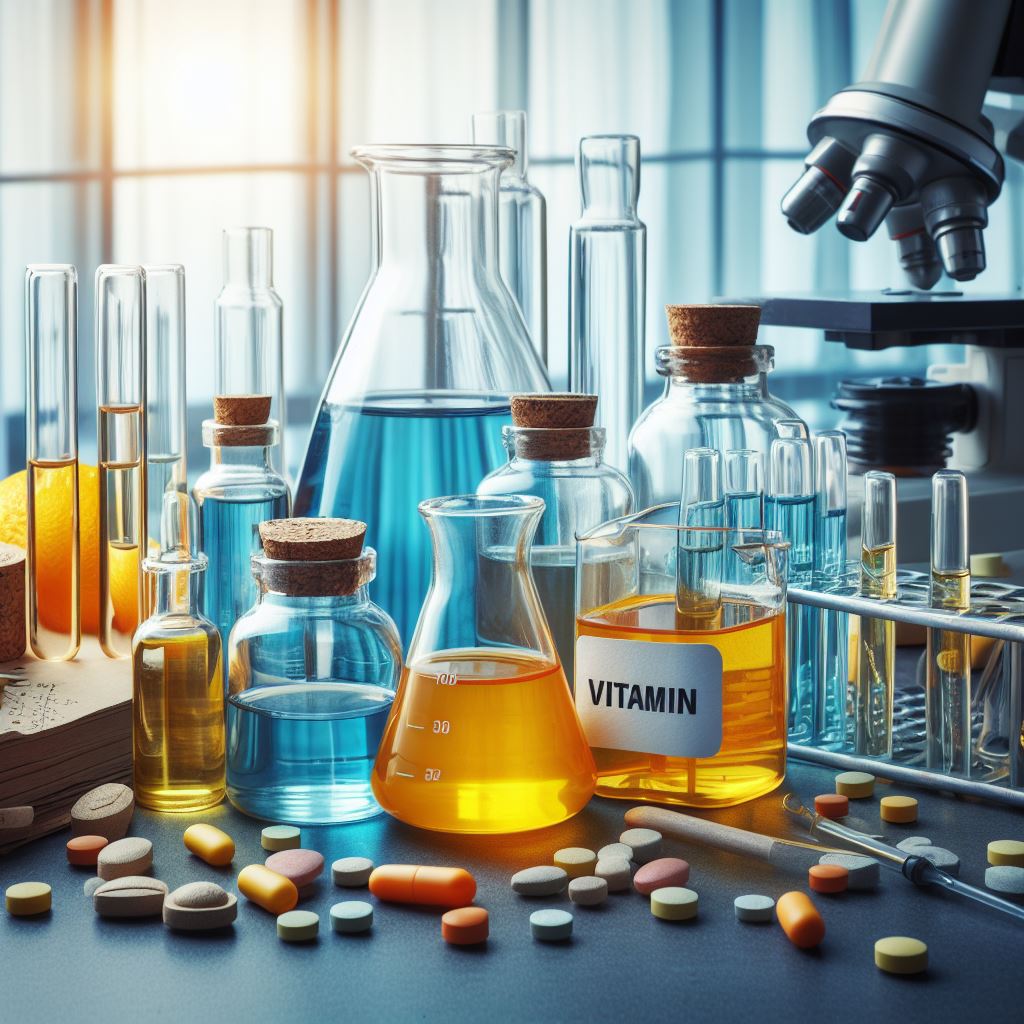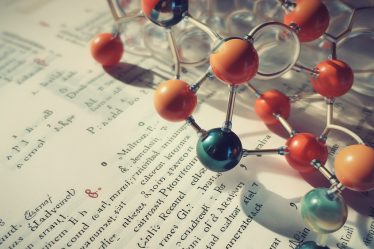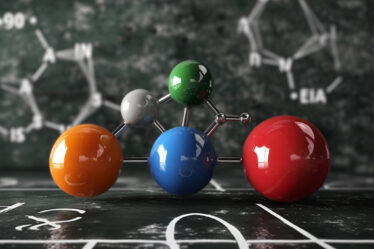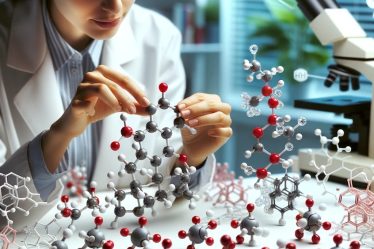
Welcome to the world of vitamins, where small organic compounds make a big difference in your health and the field of chemistry. You might already know that vitamins are essential for good health, but did you know they are also fascinating from a chemical standpoint? In your body, vitamins are crucial for various metabolic activities, aiding growth and maintaining overall health.
In this blog, you’ll discover the diverse types of vitamins, delve into their chemical structures, and understand how they function in your body. You’ll learn about fat-soluble and water-soluble vitamins and see how your body uses these vital nutrients. Get ready to uncover the importance of vitamins in your daily life and their intriguing role in chemistry.
Here’s a Glimpse of What You’ll Learn:
- Vital Functions of Vitamins: Discover how vitamins contribute to overall health and metabolic processes.
- Fat-Soluble vs. Water-Soluble Vitamins: Understand these two vitamin groups’ unique properties, absorption, and storage differences.
- Chemical Structures of Vitamins: Explore the molecular makeup of vitamins and how their structures dictate their roles and functions in the body.
- Natural versus Synthetic Vitamins: Learn about the chemical distinctions and effectiveness of vitamins derived from natural sources compared to those produced in laboratories.
- Vitamins in Metabolic Reactions: Delve into the crucial roles of vitamins as coenzymes in various essential biochemical processes.
- Vitamins and Overall Health: Uncover the broader implications of vitamins on health, highlighting their importance in boosting immunity and acting as antioxidants.
The basics of Polymers and PET plastic.
Vitamins Explained: Types and Functions
Understanding Vitamins: Definitions and Roles
Vitamins are a group of essential organic compounds that you need in small amounts for maintaining good health. They play several vital roles in your body, such as aiding in energy production, supporting immune function, and ensuring normal growth and development. Unlike other nutrients, your body cannot produce most vitamins in sufficient amounts. Therefore, you typically get them from your diet or supplements. Remember, understanding these basics is just the start. If you want more detailed knowledge, consider contacting a tutor or enrolling in tutoring classes.
Vitamins Classification: Fat-Soluble vs. Water-Soluble
Vitamins are broadly classified into two main categories: fat-soluble and water-soluble. Fat-soluble vitamins, including A, D, E, and K, are stored in your body’s fatty tissues and liver. They are absorbed along with fats in your diet and can stay in your body for extended periods. Water-soluble vitamins, which include the B-complex vitamins and vitamin C, are not stored in your body. Instead, they dissolve in water and are excreted through urine, requiring regular replenishment in your diet.
Here’s a table comparing their properties, absorption, and storage:
|
Vitamin Type |
Properties |
Absorption Mechanism |
Storage Capability |
|
Fat-Soluble |
A, D, E, K |
Absorbed with dietary fats |
Stored in body fats |
|
Water-Soluble |
B-complex, C |
Dissolve in water; excreted in urine |
Not stored in the body |
Understanding the differences between these types is crucial for managing your dietary needs. If you’re struggling with these concepts, don’t hesitate to seek a private teacher or join chemistry lessons to enhance your understanding.
Chemistry Behind Vitamins: Structures and Differences
Chemical Nature of Vitamins: Fat-Soluble vs. Water-Soluble
The molecular structures of vitamins greatly influence their behavior in your body. Fat-soluble vitamins, which include A, D, E, and K, have longer, nonpolar chains or rings that make them soluble in fats and oils. This structure allows them to be stored in your body’s fatty tissues and liver for later use. What are fatty acids?
On the other hand, water-soluble vitamins, like the B-complex and vitamin C, are polar molecules. They dissolve quickly in water and are not stored in the body, leading to a need for regular intake as any excess is excreted in the urine. This difference in solubility and storage directly impacts how you should balance these vitamins in your diet. For a more detailed insight into their molecular differences, consider seeking help from a tutor in chemistry.
Ethanol and Alcohols in chemistry, Fermentation, and how Beer is Made.
Natural vs. Synthetic Vitamins: Chemical Comparisons
When comparing natural and synthetic vitamins, the primary difference lies in their chemical composition and how your body processes them. Natural vitamins are derived from food sources and are typically accompanied by other nutrients that aid their absorption and utilization. However, Synthetic vitamins are manufactured in labs and may lack these complementary nutrients. While their basic chemical structures might be similar, the presence or absence of these additional compounds can affect how effectively your body utilizes the vitamins.
For example, natural vitamin E (d-alpha-tocopherol) is often more bioavailable than its synthetic counterpart (dl-alpha-tocopherol). However, for some vitamins like vitamin C (ascorbic acid), the natural and synthetic forms are chemically identical and function similarly in your body.
Understanding these nuances in vitamin chemistry can be complex. If you’re delving deeper into this subject, consulting with a chemistry tutor or enrolling in specialized tutoring classes for a more thorough understanding might be beneficial.
Molecular Synthesis and Structure of Vitamins: Nature vs. Laboratory
Natural Synthesis of Vitamins: Understanding the Chemistry in Nature
In nature, vitamins are synthesized through complex biochemical pathways. Each vitamin has a unique molecular structure that determines its function and role in the body. For instance, consider vitamin D, which is synthesized in the skin through exposure to sunlight. This process involves the conversion of 7-dehydrocholesterol to vitamin D3 (cholecalciferol) under UV radiation. Similarly, plants have pathways to produce vitamins like vitamin C (ascorbic acid), which involves a series of enzyme-mediated steps starting from simple sugar molecules.
These natural processes result in specific molecular structures, such as the ring structure of vitamin C, crucial for its antioxidant function, or the steroid backbone of vitamin D, significant for calcium regulation.
Synthetic Vitamins: Laboratory Processes and Chemical Structures
Unlike their natural counterparts, synthetic vitamins are created in laboratories, often replicating the molecular structures found in nature. Synthetic vitamins involve chemical processes to yield significant quantities of these essential nutrients.
For example, synthetic vitamin C, identical in molecular structure to its natural form, is produced through a series of chemical reactions starting from glucose. Another example is vitamin B3 (niacin), which can be chemically synthesized from nicotinic acid. While these synthetic forms aim to mimic the natural molecular structure, there can be differences in their isomeric forms or the presence of additional chemical groups, affecting their absorption and bioavailability.
The chemistry behind synthetic vitamin production is a testament to the advancements in pharmaceutical chemistry. If this topic intrigues you and you wish to explore it further, considering a chemistry class or a tutor’s guidance could enhance your understanding of vitamin synthesis.
Learn about chromatography and solutions and mixtures.
Body’s Use of Vitamins and Minerals: A Chemical View
Metabolic Roles of Vitamins: Chemical Processes Explained
Vitamins are integral in your body’s metabolism, primarily acting as essential coenzymes and cofactors in various biochemical reactions. They are crucial in converting food into energy, synthesizing and repairing DNA, and facilitating numerous other metabolic processes. These roles are not just about the presence of vitamins but also about their active participation in chemical reactions at the cellular level.
For a more precise understanding, here’s a table outlining some essential vitamins and their involvement in metabolic chemical processes:
|
Vitamin |
Role in Metabolic Chemical Processes |
|
A |
Supports vision and cell growth; involved in gene transcription. |
|
C |
Essential for collagen synthesis; acts as an antioxidant. |
|
D |
It helps in calcium and phosphate metabolism and gene regulation. |
|
E |
Protects cell membranes from oxidative damage |
|
K |
Vital for synthesizing proteins involved in blood clotting |
|
B1 |
Acts as a coenzyme in carbohydrate metabolism |
|
B12 |
Necessary for DNA synthesis and red blood cell formation |
Vitamins and Minerals: Synergistic Interactions
In the body, vitamins and minerals work together synergistically, enhancing each other’s absorption and effectiveness. This cooperative interaction ensures the smooth functioning of various physiological processes. For example, vitamin D significantly absorbs calcium and phosphorus, essential minerals for bone health. Vitamin C enhances iron absorption, aiding in the prevention of anemia. Magnesium’s role in energy production is complemented by vitamin B1 (thiamine), showcasing a perfect example of mineral-vitamin synergy.
Vitamins’ Role in Health and Chemistry: A Comprehensive Look
Vitamins, though required in small amounts, play an integral role in our health and drive numerous chemical processes in our bodies. They are key players in maintaining our physiological balance and enhancing bodily functions at a molecular level. In this section, we’ll explore the unique chemical roles of vitamins and their contributions to critical biochemical reactions.
Health Benefits of Vitamins: Beyond Basic Nutrition
Vitamins do more than keep us healthy; they’re actively involved in our body’s chemistry. Let’s look at how they interact with different processes:
- Vitamins as Antioxidants: Vitamins like C and E are not just nutrients but powerful antioxidants. They work at the cellular level to combat oxidative stress, a process that can damage cell structures.
- Vitamins and Immunity: Some vitamins, like Vitamin D, play a more direct role in your immune health than you might realize. They interact with immune cells to enhance your body’s defense mechanisms.
Vitamins in Biochemical Reactions: A Closer Look
Vitamins are far more than dietary essentials; they are critical in various biochemical reactions:
- Enzyme Function and Vitamins: B vitamins, for instance, are not just energy boosters. They are fundamental components of enzymes that drive critical metabolic reactions in your body.
- Genetics and Cell Division: Regarding DNA synthesis and repair, vitamins like B12 and folic acid are at the forefront. They’re essential for genetic stability and cell division.
Understanding these intricate biochemical roles can be pretty intriguing. Suppose you’re eager to dive deeper into vitamin chemistry. In that case, a chemistry tutor or a specialized class can offer you an in-depth perspective and help you make sense of these complex interactions.
Learning the Chemistry of Vitamins with a Tutor
In summary, we’ve covered vitamins’ crucial role in our health and their chemical properties. Understanding the difference between fat-soluble and water-soluble vitamins and the distinctions between their natural and synthetic forms is vital to appreciating their role in our bodies.
If you want to deepen your understanding of vitamin chemistry or need help grasping these concepts, remember that tutoring can be valuable. Whether through organized classes, private lessons, or one-on-one sessions with a knowledgeable teacher, further education in this area can provide the tools to understand better these essential nutrients and their impact on your health.
If you’re curious about exploring more, consider contacting a tutor. Their guidance can offer you a more precise and more practical understanding of the chemistry behind vitamins.
Are you looking for a chemistry tutor? Enter “chemistry tutor Glasgow” or “chemistry teacher Sheffield” on your preferred tutoring platform, such as meet’n’learn, to find a teacher who can meet your specific needs.
If you thrive in group learning environments, search “chemistry classes London” or “chemistry lessons Manchester” online to discover local schools offering chemistry lessons.
Frequently Asked Questions About Vitamins in Chemistry
1. What is the Chemical Difference Between Fat-Soluble and Water-Soluble Vitamins?
Fat-soluble vitamins, like A, D, E, and K, have nonpolar structures that store them in body fats. Water-soluble vitamins, such as the B-complex and vitamin C, are polar and not stored in the body, requiring regular replenishment.
2. How Does the Body Synthesize Vitamins Naturally?
The body synthesizes vitamins like vitamin D, formed in the skin through sunlight, converting 7-dehydrocholesterol to cholecalciferol (vitamin D3). Other vitamins must be obtained through diet.
3. What are the Key Roles of Vitamins in Metabolic Chemical Processes?
Vitamins are coenzymes and cofactors essential for metabolic processes like energy production, DNA synthesis and repair, and enzyme function.
4. Are Synthetic Vitamins as Effective as Natural Vitamins?
Synthetic vitamins aim to mimic the structure of natural vitamins. While some, like synthetic vitamin C, are chemically identical to natural forms, others may vary in bioavailability and absorption.
5. Why is Understanding Vitamin Chemistry Important?
Understanding the chemistry of vitamins is essential for knowing how they function in our bodies, their roles in health and disease prevention, and making informed decisions about diet and supplementation.
Need help with biology topics? Explore our extensive collection of biology educational blog posts designed to simplify complex concepts for you. Whether it’s photosynthesis, osmosis, the intricacies of green algae, understanding bacteria and viruses, or delving into the fascinating world of genetics and cells, our resources have got you covered. Expand your knowledge and enhance your learning journey with us today.
References:
1. Chem Libre Texts
2. Britannica
3. Wikipedia



